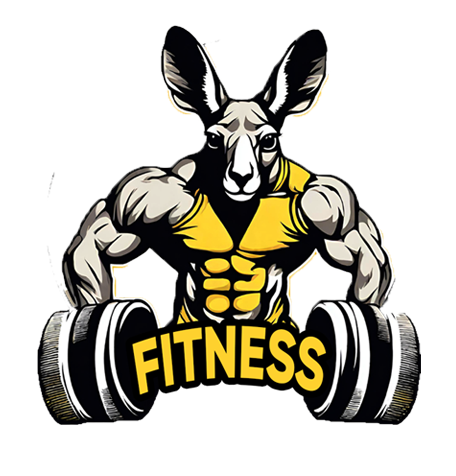
Table of Contents
ToggleIntroduction
In a world driven by fast-paced living and high-intensity workouts, the concept of mindfulness is gaining momentum. As we strive to optimize physical health, the role of mental well-being in fitness routines becomes increasingly significant. One powerful avenue for cultivating mindfulness within workouts is through the practice of mindful breathing.
Mindfulness involves being fully present and engaged in the current moment, a practice that has proven benefits for both mental and physical health. While workouts are traditionally associated with pushing physical limits, the incorporation of mindfulness introduces a holistic approach to well-being.
Mindful breathing, a cornerstone of mindfulness practices, serves as a bridge between the physical and mental aspects of exercise. This article explores the fundamentals of mindful breathing, its manifold benefits, and practical techniques for seamlessly integrating it into your workouts.
Mindful Breathing Basics
Definition and essence
Mindful breathing, often referred to as breathwork or conscious breathing, involves paying deliberate attention to the breath. It’s not just a physical act but a conscious process that engages the mind. By focusing on the breath, individuals can anchor themselves in the present moment, fostering a heightened sense of awareness.
Connection to stress reduction
The breath serves as an anchor in the sea of constant thoughts. Mindful breathing interrupts the autopilot mode of the mind, creating a space to observe thoughts without judgment. This simple act has a profound impact on stress reduction, making it an invaluable tool in the context of workouts where the body is under physical stress.
Benefits
Improved focus
Mindful breathing acts as a mental reset button. In the midst of a challenging workout, it brings attention back to the current movement, enhancing focus and concentration. This heightened awareness contributes to better form, reduced risk of injury, and an overall more effective exercise session.
Enhanced mind-body connection
The mind and body are intricately connected, yet the demands of modern life often lead to a disconnect. Mindful breathing serves as a bridge, facilitating a deeper connection between physical sensations and mental experiences. This heightened mind-body awareness can lead to a more intuitive and enjoyable workout experience.
Stress reduction during exercise
Mindful breathing during exercise is a powerful stress management tool. It regulates the body’s stress response, reducing the production of cortisol, the stress hormone. This not only contributes to a more relaxed workout environment but also supports overall mental well-being.
Techniques
Diaphragmatic breathing
One fundamental mindful breathing technique is diaphragmatic breathing. Also known as abdominal or deep breathing, it involves engaging the diaphragm to take slow, deep breaths. Choose a comfortable position to sit or lie down and practice diaphragmatic breathing. Grasp your abdomen with one hand and your chest with the other. Breathe deeply through your nose, letting your stomach grow. Exhale slowly through pursed lips, feeling your abdomen contract. Repeat this process for several breaths, gradually incorporating it into your workout routine.
Box breathing
Box breathing, also known as square or four-square breathing, is a structured technique that brings rhythmic balance to the breath. This technique is particularly effective in calming the nervous system and enhancing focus. Begin by inhaling for a count of four, holding the breath for four counts, exhaling for four counts, and pausing for another four counts before beginning the cycle again. Incorporating box breathing during rest intervals or cooldowns can promote a sense of calm and balance.
Integration into Workouts
Tips for seamless inclusion
Successfully integrating mindful breathing into workouts requires a gradual and intentional approach. Begin by incorporating short sessions of mindful breathing during warm-ups or cool-downs. As you become more comfortable, extend the practice into the main workout sessions. Consistency is key, so aim for regular, brief moments of breathing rather than sporadic, extended sessions.
Adapting mindful breathing to different exercises
Mindful breathing is versatile and adaptable to various workout modalities. Whether you’re lifting weights, practicing yoga, or engaging in cardiovascular activities, the principles of breathing can be applied. Tailor your breathwork to complement the rhythm and intensity of each exercise, maintaining a balance between effort and ease.
Increased Workout Effectiveness
Amplifying exercise benefits with mindfulness
Mindfulness amplifies the benefits of exercise by fostering a deeper mind-body connection. When your mind is fully engaged, each movement becomes purposeful. This heightened intentionality leads to improved coordination, increased muscle engagement, and a more effective overall workout.
Enhancing overall well-being through breathwork
Mindful breathing transcends the physical aspects of exercise; it nurtures mental and emotional well-being. By incorporating breathwork into your workouts, you’re not just enhancing your fitness journey—you’re cultivating a holistic sense of well-being that extends far beyond the gym.
Practical Application
Real-life examples of mindful breathing in workouts
Consider a scenario where you’re engaged in high-intensity interval training (HIIT). Between sets, take a few moments for mindful breathing. Inhale deeply, feeling the oxygen energize your body, and exhale slowly, releasing tension. Apply the same principle to strength training, allowing each breath to synchronize with your lifting or lowering phases. Real-life examples illustrate how breathing seamlessly integrates into diverse workout routines.
Success stories and positive outcomes
Individuals who have embraced mindful breathing in their workouts often report enhanced satisfaction with their exercise experiences
. Success stories include improved mental clarity, reduced post-exercise fatigue, and a greater sense of overall well-being. These positive outcomes affirm the transformative impact of breathing in diverse fitness journeys.
Overcoming Challenges
Addressing common hurdles
Incorporating mindful breathing into workouts may pose initial challenges. Common hurdles include distractions, impatience, or skepticism about its effectiveness. Address distractions by choosing a quiet workout space and gradually increasing the duration of breathing. Patience is key, as the benefits of breathwork often unfold with consistent practice. Overcoming skepticism involves embracing the experiential nature of mindfulness; the true impact is felt through firsthand experience.
Tips for maintaining consistency
Consistency is crucial for reaping the full benefits of mindful breathing. Establish a routine by allocating specific times for breathwork within your workout schedule. Consider setting reminders or integrating breathwork into existing habits, such as before starting a new exercise or during short breaks. Creating a consistent routine enhances the likelihood of seamless integration and long-term adherence.
Mindful Breathing Resources
Recommended apps or tools
Several apps and tools are designed to support mindful breathing. Consider exploring applications like Headspace, Calm, or Insight Timer, which offer guided breathwork sessions tailored for different fitness levels. These resources provide structured guidance and meditation, enhancing the accessibility of breathing for individuals at various stages of their fitness journey.
Online guides and further reading
In addition to apps, numerous online guides and articles delve into the intricacies of mindful breathing. Platforms like YouTube and wellness websites offer video tutorials and written content that explore various breathwork techniques. Further reading on the science behind breathing can deepen your understanding, empowering you to approach breathwork with informed intent.
Conclusion
In conclusion, mindful breathing stands as a transformative element in the realm of fitness, offering benefits that extend beyond the physical. The recapitulation of enhanced focus, stress reduction, and a heightened mind-body connection reinforces the multifaceted advantages of incorporating breathwork into workouts.
The call to action echoes the encouragement to embrace breathing as an integral part of your fitness routine. As you embark on this journey, remember that each intentional breath contributes not only to your physical vitality but also to the profound well-being of your mind and spirit.
FAQs
Q: What is mindful breathing, and how does it benefit workouts?
A: It is conscious attention to the breath, enhancing workouts by improving focus, fostering mind-body connection, and reducing stress.
Q: Can mindful breathing be adapted to different exercises?
A: Yes, it is versatile and adaptable to various exercises, including weightlifting, yoga, and cardiovascular activities.
Q: How can mindful breathing be applied practically during workouts?
A: It can be incorporated between sets, synchronized with movements, or integrated into cooldowns to enhance recovery and overall exercise experience.
Q: Are there reported benefits from practicing mindful breathing during workouts?
A: Yes, individuals report improved mental clarity, reduced post-exercise fatigue, and an overall sense of well-being.
Q: What resources are available for exploring mindful breathing further?
A: Apps like Headspace, Calm, and online guides offer guided sessions and tutorials for various fitness levels.
